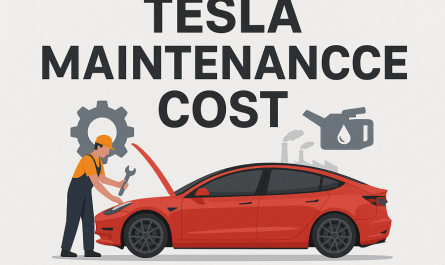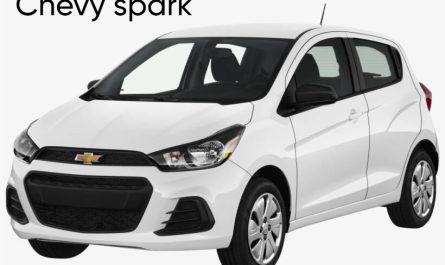In the rapidly evolving world of electric mobility, Tata Motors is stepping up its game with the much-anticipated Tata Harrier EV 7 seater. Designed to blend power, comfort, and sustainability, this all-electric SUV promises a thrilling driving experience without compromising on space or technology. As Indian consumers increasingly shift towards electric vehicles, the Tata Harrier EV emerges as a strong contender in the premium SUV segment—especially with its extended seating capacity that caters to larger families or those seeking extra versatility. With bold styling, futuristic features, and the trusted legacy of Tata Motors, the Tata Harrier EV 7 seater is all set to redefine what it means to drive green in style and comfort.

Also Read: Tata Nano 2025 Comeback: Price, Design, Engine & Features
Design, Exterior Features, and Build Quality
The Tata Harrier EV 7 seater will likely feature a bold, aerodynamic design with signature EV styling elements like a closed-off grille, LED DRLs, and blue accent highlights that represent Tata’s electric identity. Based on the OmegaArc platform derived from Land Rover’s D8 architecture, the build quality is expected to remain strong and safe, maintaining Tata’s legacy of robust vehicles.
Expect features such as dual-function smart keys with electronic boot release, connected LED tail lamps, and aggressive-looking front and rear bumpers. The SUV will ride on large aero-optimized alloy wheels designed to improve efficiency and style. A ground clearance of 205 mm, roof rails, flush door handles, and a connected tail light setup with an illuminated logo will give the Harrier EV a futuristic look.
A major upgrade is the third-row seating configuration, which transforms the Harrier into a full 7-seater electric SUV, ideal for larger families or long-distance travel. Rear doors will open wide for easy access to the third row, and the panoramic sunroof ensures the cabin stays light and airy throughout.
| Specification Detail | Expected Value |
|---|---|
| Powertrain Type | All-Electric (Ziptron architecture) |
| Battery Capacity | ~60-70 kWh |
| Claimed Range (ARAI) | 500+ km |
| Seating Capacity | 7 |
| Drive Type | Front-Wheel / All-Wheel (Optional) |
| Charging Time (Fast) | ~50 mins (10–80%) |
| Ground Clearance | 205 mm |
| Boot Space (with all seats) | ~300 Liters (expandable) |
| Sunroof | Panoramic |
| Infotainment | 12.3-inch Touchscreen (Expected) |
Interior, Comfort, and Smart Features
The Tata Harrier EV 7 seater will focus on delivering a modern electric cabin experience. The interiors are expected to feature an eco-conscious material palette, offering premium leatherette seats, ambient lighting, and advanced climate control across all three rows. With ventilated seats, electronically adjustable driver and co-passenger seating, and memory settings, comfort will be a strong suit.
A large 12.3-inch touchscreen infotainment system, with Tata’s latest UI supporting wireless Android Auto and Apple CarPlay, will dominate the dashboard. The driver will get a fully digital instrument cluster displaying battery status, navigation, range left, regenerative braking levels, and other EV-specific details.
The second row will be spacious with reclining seats and center armrest, while the third row will comfortably seat two average-sized adults for short-to-medium journeys. Multiple USB-C charging ports, dedicated AC vents for all rows, and roof-mounted speakers will enhance the premium in-cabin experience.
Tech lovers will appreciate features like 360-degree surround view camera, ADAS (Advanced Driver Assistance Systems), blind-spot monitoring, and OTA updates. The car is also expected to offer multiple regenerative braking modes and drive modes like Eco, City, Sport, and an optional off-road mode for AWD versions.
Pricing, Variants, and Expected Launch Offers
While the official pricing hasn’t been announced, the Tata Harrier EV 7 seater is expected to be priced between ₹28 to ₹35 lakh (ex-showroom), depending on the variant and battery pack. Being a high-end electric SUV with 7 seats, this EV is likely to compete directly with the likes of the Hyundai Ioniq 5, MG ZS EV, and the Mahindra XUV.e8.
Tata may also offer introductory launch discounts or benefits such as:
- Exchange bonus
- Loyalty benefits for existing Tata car owners
- Free home charger installation
- Extended battery warranty packages
- Government subsidies in eligible states
The on-road price may vary significantly based on state EV policies, but buyers could potentially save up to ₹2–3 lakh via FAME-II and state-level EV incentives.
Battery, Performance, and Range
The Harrier EV 7 seater is likely to come with Tata’s proven Ziptron technology that currently powers models like Nexon EV and Punch EV. For the Harrier, expect a larger 60–70 kWh battery pack offering a real-world range of over 400 km and a claimed ARAI range of 500+ km. It will support DC fast charging, allowing the battery to go from 10% to 80% in around 50 minutes.
Performance-wise, the Harrier EV will deliver instant torque and a smooth, silent driving experience typical of electric vehicles. With the possibility of dual motor AWD variants, this 7-seater EV will offer superior grip and performance on rough or slippery roads. Tata is also expected to tune the suspension for optimal comfort and handling, even when the vehicle is fully loaded.
Final Verdict – Is the Tata Harrier EV 7 Seater Worth the Wait?
The Tata Harrier EV 7 seater represents Tata Motors’ commitment to building future-ready electric vehicles for Indian families. Combining the practicality of a 7-seater SUV with the eco-efficiency of an electric drivetrain, this vehicle will appeal to those who want zero-emission mobility without compromising on space, comfort, or safety.
If you’re considering upgrading to an electric vehicle in 2025 and need a spacious, tech-rich SUV that’s designed for Indian conditions, the Tata Harrier EV 7 seater should definitely be on your watchlist. With an expected launch around late 2025 and Tata’s strong EV service ecosystem already in place, this might be the next big thing in the electric SUV segment.


